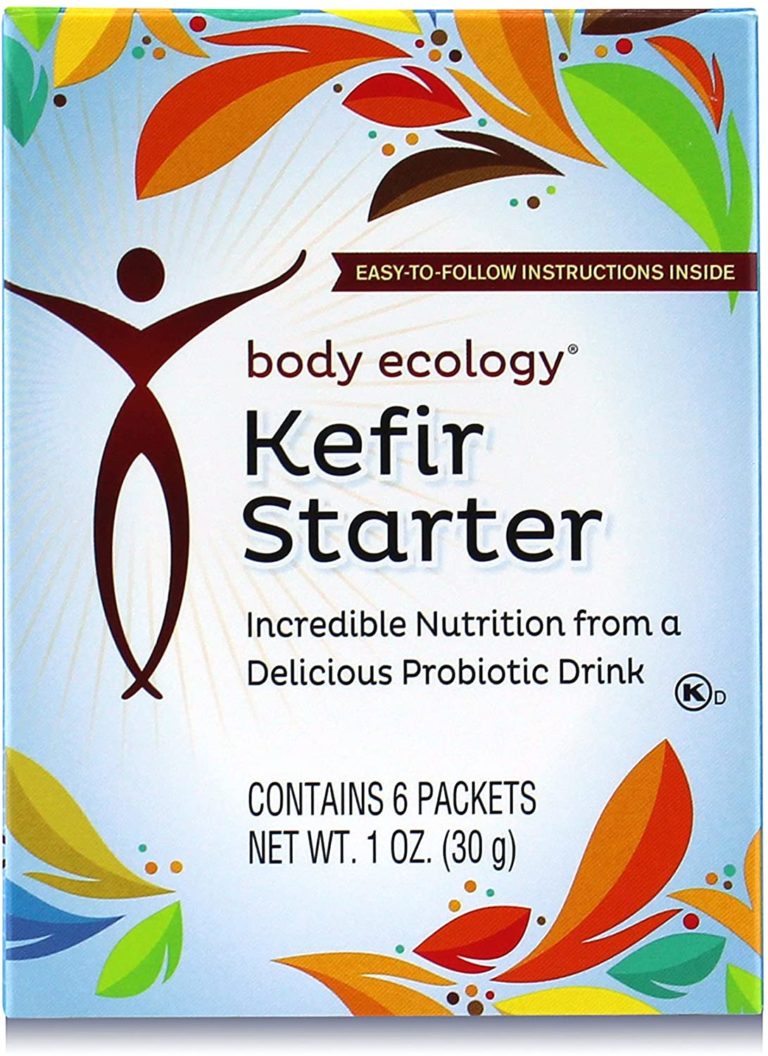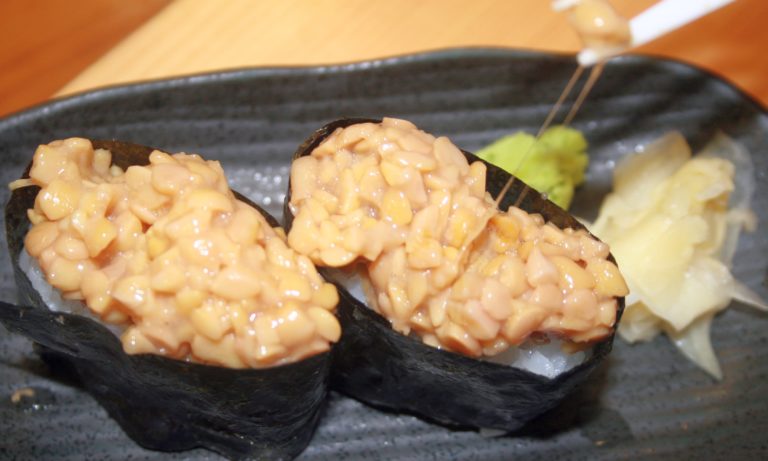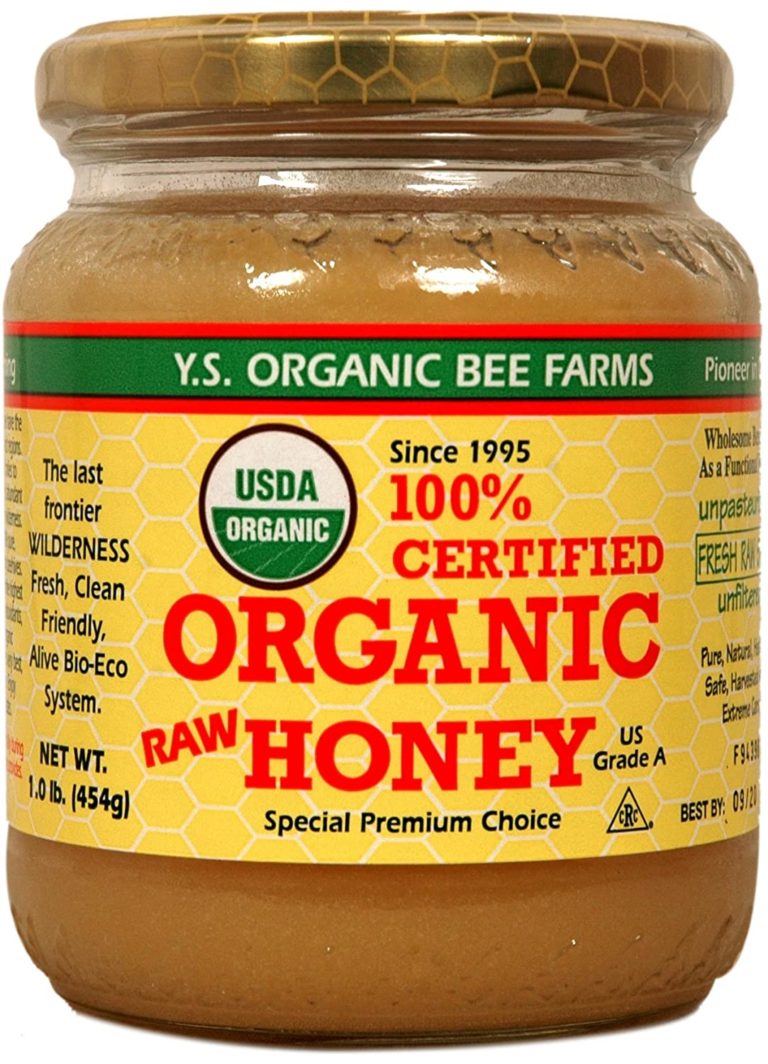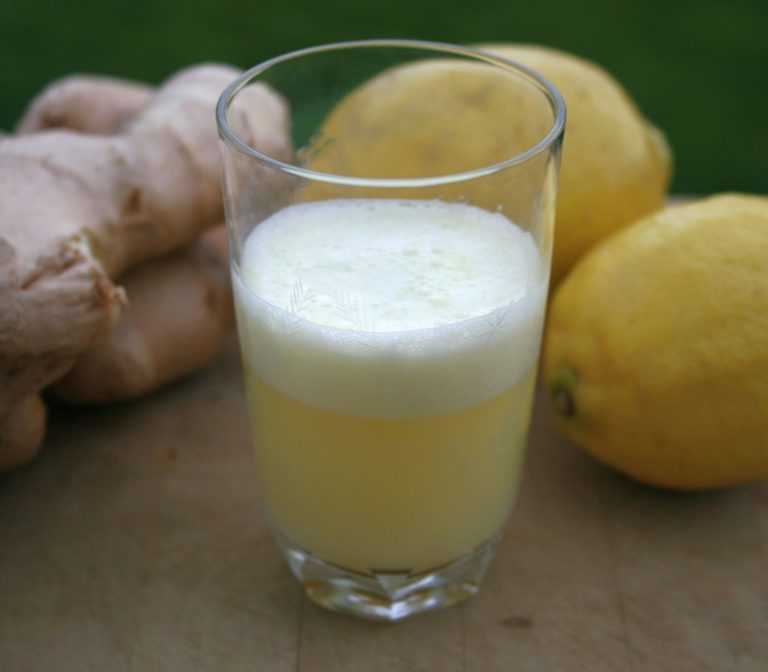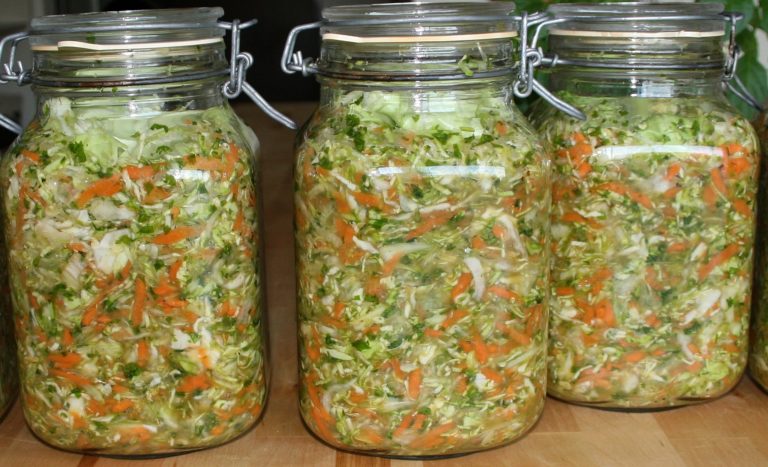Lacto-Fermentation At Home | Three Requirements to Succeed
Lacto-fermentation at home is a process by which you can create delicious yogurt, kefir, kombucha, natto, kimchi, and other fermented foods. A favourite is fermented whole tomatoes—something I discovered when I visited friends in Eastern Europe. When you understand lacto-fermentation, you can really be creative.
I’ve done my share of mistakes and ruined some batches along the way. This post might help you to avoid some of those mistakes. But first, what is lacto-fermentation?
What is lacto-fermentation?
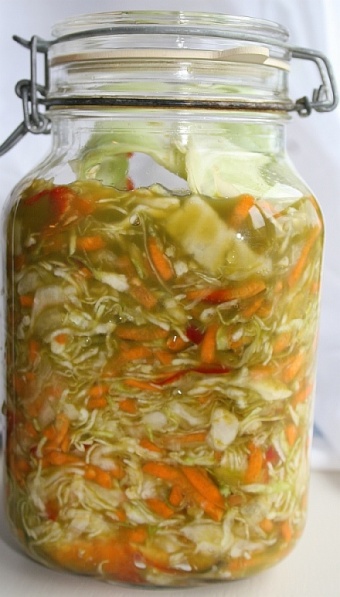
Lacto-fermentation is a natural, biological process involving friendly microorganisms that change the makeup of vegetables and dairy. During this process they produce lactic acid which creates the familiar acidic taste. Fermented food is easier for the body to assimilate as the nutrients are already “chewed and digested” by the microorganisms.
During fermentation, microorganisms produce enzymes, vitamins, acids, hydrogen peroxide, and a number of other potent substances.
Fermented food is already chewed and digested by microorganism.
- Lacto-fermentation prevents the growth of harmful microorganisms like mould;
- it promotes the growth of beneficial bacteria;
- increases bio-availability of nutrients;
- acts as a natural preservative;
- makes food easier to digest.
Summary: Lacto-fermentation is a process whereby microorganisms produce bio-available, nutritious, delicious food with long shelf-life. Try fermenting garlic, onion, cucumber, soybeans, a vegetable mix of your choice. Try fermenting milk, cream, butter, tea, and bread-dough.
Three requirements to succeed
These principles apply mainly to vegetable fermentation. Other techniques are used to ferment dairy and to prepare sourdough bread.
These requirements are simple but essential. When fermentation is complete, store the jars in a cool place like a cellar or fridge. The taste of lacto-fermented vegetables often improves and matures for during storage—it turns complex and tangy.
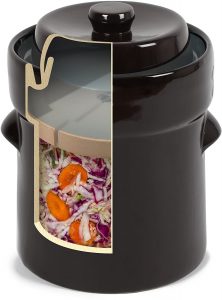
Three requirements:
- Correct salt concentration
- Correct temperature
- Absence of oxygen
You might also like to read
1. Salt concentration
Between 1-3% is a good range. However, there’s no need to be picky as lactic-acid producing bacteria (probiotics) usually tolerate high salt concentrations. For example, the Leuconostoc bacteria in kefir and sauerkraut has a high salt tolerance.

How much salt to add:
- Add 1-3 tablespoons for every medium head cabbage or equivalent amount of vegetables. Mix the salt with the shredded vegetables.
- A second option is to dissolve 1-3 tablespoons in every quart of brine. I like to juice celery stalks or cabbage for brine. But you can also mix the salt in water and use as brine.
- Himalayan or sea salt are good options.
Traditionally, lacto-fermented vegetables is prepared without a starter. This is called “wild” or “spontaneous” fermentation as it utilises the microorganisms naturally present on raw vegetables (and in raw dairy). In such cases, much salt is often used to preserve the veggies and prevent harmful microorganisms to develop. Wild fermentation works well if you know what you are doing. However, it is safer to use a good starter culture when fermenting.
Summary: Adding salt when fermenting vegetables promotes crunchiness, improves taste, and protects the veggies from unwanted microorganisms. Salt also helps preserve the product longer. Many starter cultures also work better when salt is added.
2. Correct temperature
When fermenting vegetables, probiotic microorganisms are most productive at temperatures between 64 to 72 degrees (18-22º C). If it’s cooler, it might require more time to fully ferment. However, more problems can occur when it’s too warm.
Here are a few facts to consider:
- Around 72 degrees or more (22ºC) favours lactobacillus species. (in vegetables, sauerkraut, dairy)
- Some bacteria like it cooler, as Leuconostoc species with an optimum of 64 up to 72 degrees (18 to 22ºC)
- When making yogurt, species like thermophiles prefer 120-130 degrees (45-5Oº C which is why you can put it close to a radiator)
The challenge to ferment vegetables in a warm climate
If it’s too warm during fermentation, mould and unwanted bacteria can easily develop. The vegetables easily turn mushy. Once I put my jars to ferment in a cabinet close to the stove which ruined my entire batch as the temperature quickly raised when using the stove.
Summary: Correct temperature is essential for your batch to turn out well. The vegetables tend to become mushy when it’s too warm so stick to a range between 64-72 F (18-22º C).
3. Absence of oxygen
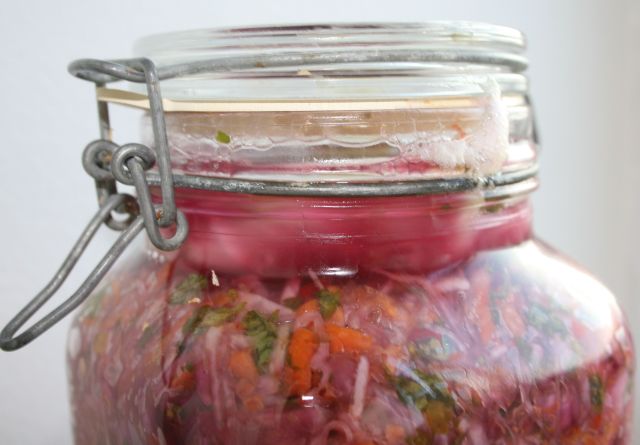
Lacto-fermentation at home works best in the absence of oxygen. Therefore, using air-tight jars is important (Mason jars work well). However, during the first few days of fermentation pressure builds in the jars so don’t screw the lids on too tight. You can also open the lid for a second now and then to let gas out. After fermentation, screw the lids on tight to keep air out.
As you can see in the image, I use jars with a rubber seal that allows gas to escape but no oxygen is allowed in. The first few days, brine might leak out which is normal.
Keep the vegetables submerged in brine. Add enough brine to each jar so it completely covers the veggies. I always add a whole cabbage leaf on top of each jar to keep the veggies in the brine. Discard the leaf when you consume the vegetables.
Three phases of lacto-fermentation
Lacto-fermentation at home is a process in which microorganisms work together in stages to produce fermented food. Certain species initiates fermentation, other continues this chain-reaction as the environment slowly becomes more acid.
PHASE ONE
This begins a “break-down” process of the vegetables. During this phase, harmful microorganisms are destroyed and the batch turns increasingly sour. Usually, you see bubbles and a little brine might be leaking out from the jars. Those are good signs.
PHASE TWO
Good bacteria are now in complete control and they start consuming sugars contained in the vegetables. Bacterial convert lactose, glucose, fructose, and sucrose into lactic acid and other substances. This process increases the bio-availability of nutrients.
The level of acidity increases slowly, thus creating the familiar tart, tangy flavor. The acidity is what preserves the vegetables since most harmful microorganisms can’t survive in a sour environment. The more lactic acid produced, the more acidic the flavor.
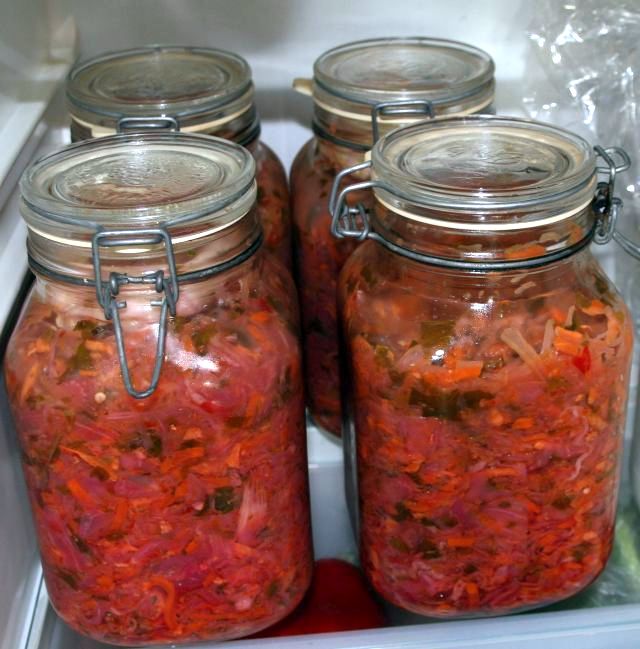
PHASE THREE
Storing the jars in a cool place slows down fermentation. However, the bacteria are still alive, slowly consuming carbohydrates and producing a range of potent substances. Good bacteria can stay alive in the jars for many months. The longer you store the jars, the more tart and complex aromas are created.
The longer you store the jars, the more tart and complex aromas are created
Summary: Three main phases are involved in fermentation of vegetables. This is because different probiotic bacteria species are most productive in each of the three stages. One reason for this is the increasingly acidic environment that promotes certain species.
Using culture starters
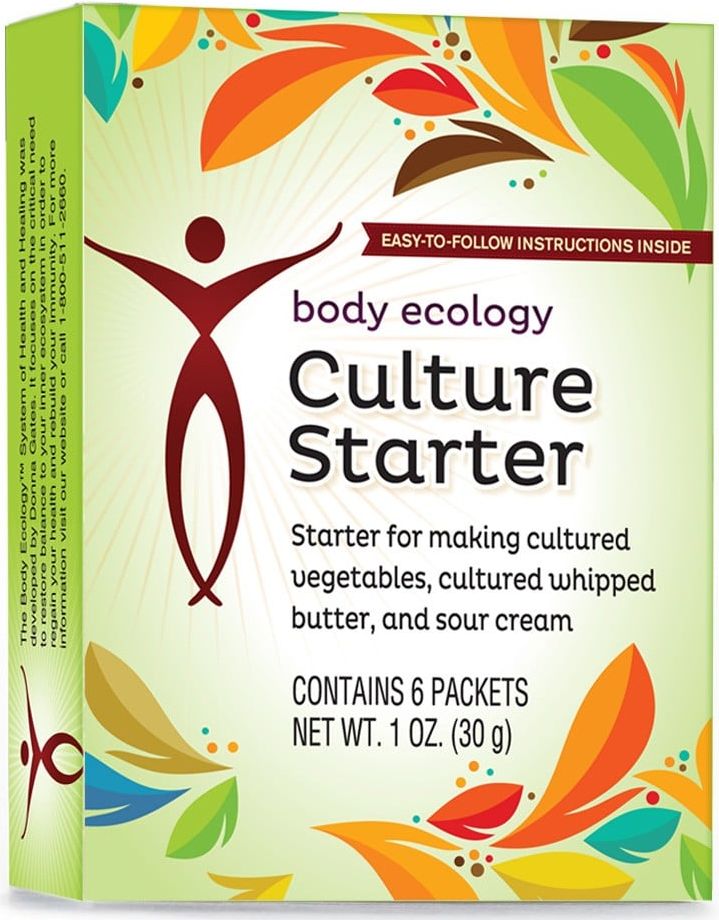
In wild lacto-fermentation, only naturally occurring microorganisms are used. Most starter cultures include more species that the ones naturally occurring. This increases diversity.
The bacteria in a starter culture will quickly take control of a batch and usually dominate the fermentation process from start to end. This is good as it suppresses the formation of unwanted microorganisms like mould.
Advantages of culture starters:
- More predictable results
- Produce more lactic acid
- Fewer problems with batches
- Stable and easier fermentation
- You can consume the product faster
- More beneficial bacteria in the jars
The quality of the fermented product depends largely on how well you control bad microorganisms. Some bad bacteria use protein as an energy source, thereby producing unpleasant odours and flavours.
Summary: Use a starter culture when fermenting vegetables as it speeds up the process and ensures a more predictable result. A good starter usually contains 5-12 different species, except in some cases like natto when there is only one.
Lacto-fermented foods at home
The following microorganisms are involved in lacto-fermentation at home.
Yogurt: Fermenting cows milk involves Lactobacillus bulgaricus, Lactobacillus acidophilus, and Streptococcus thermophilus.
Kefir: Produced with cow, sheep, goat milk and even soy, rice or coconut milk. Kefir contains strains of Lactobacillus Caucasus, Leuconostoc, Acetobacter species, and Streptococcus species. Beneficial yeast is also present.
Sauerkraut: Fermented cabbage. Strains of Leuconostoc are involved as well as Pediococcus and Lactobacillus strains like Cucumeris and plantarum. Lactic acid bacteria are the main ones when fermenting sauerkraut.
How to prepare sauerkraut at home
Miso: Japanese way of fermenting rice, barley and soybeans. Miso contains Tetragenococcus halophilus. You kill the bacteria by cooking them so add miso just before serving.
Natto: Soybeans fermented with Bacillus subtilis. Natto contains powerful enzymes and compounds.
Kimchi: Often made from cabbage, radish, cucumber and other vegetables and seasonings like ginger, garlic, scallions and many other. It contains a number of bacteria, especially Lactobacillus kimchii.
Kombucha: A kombucha culture often contains Gluconacetobacter xylinus and one or more of the yeasts Saccharomyces cerevisiae, Brettanomyces bruxellensis, Candida stellata, Schizosaccharomyces pombe, Torulaspora delbrueckii, and Zygosaccharomyces bailii.
Summary: Lacto-fermentation at home is an amazing process in which nutrients are processed and transformed by microorganisms. During this process, new potent compounds and enzymes are created.
FAQ
Bad microorganisms can disturb fermentation by producing butyric acid and other bad-smelling substances. This cause a bad taste and soft texture. Another problem is mould that can ruin the entire batch. All of this has happened to me a number of times so I’ve learned to be careful to follow the principles mentioned in this article.
Commercially fermented products use additional processes to render the final product uniform and saleable. Many products contain little, if any, beneficial bacteria. Homemade fermented foods are “alive” and packed with nutrients.

